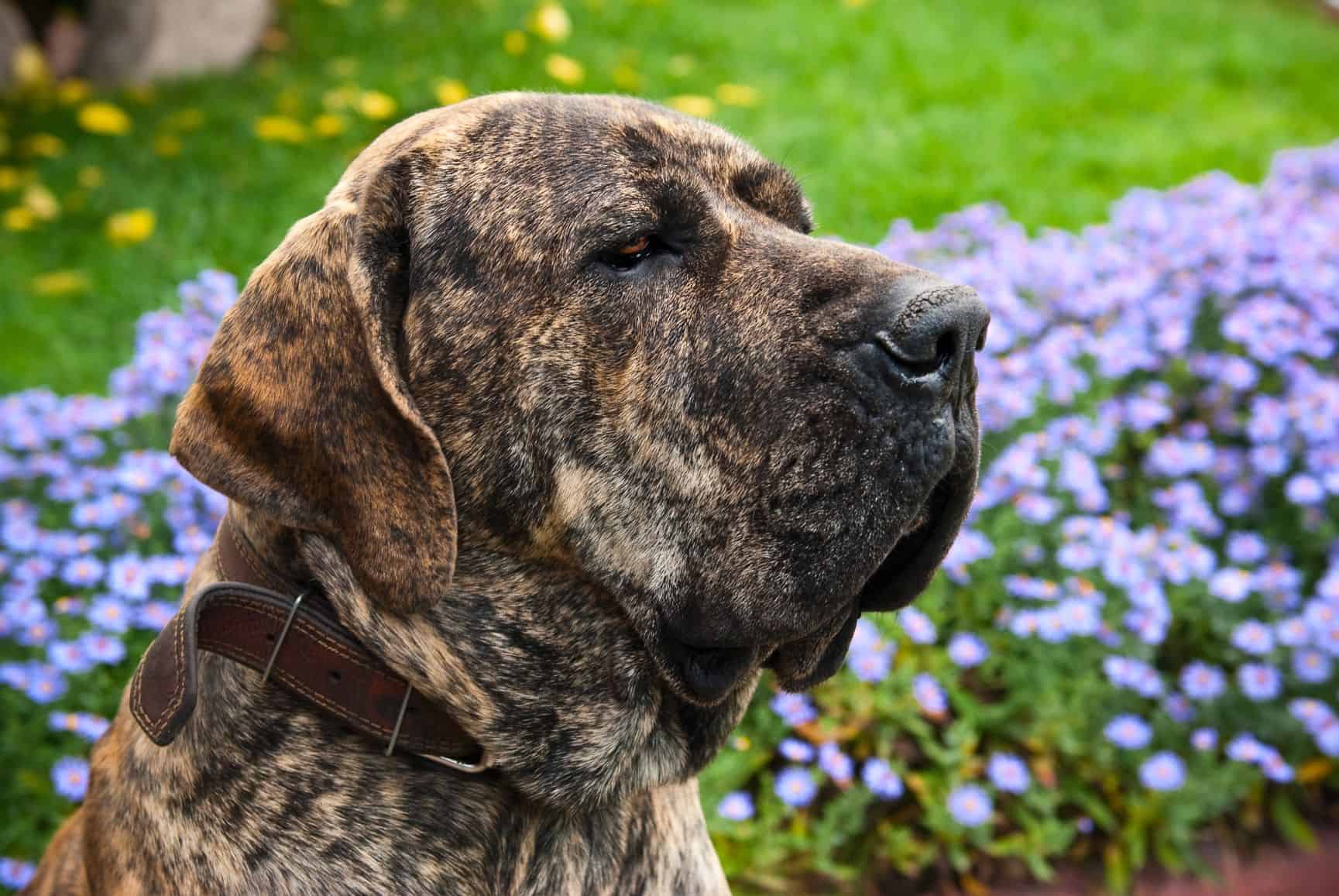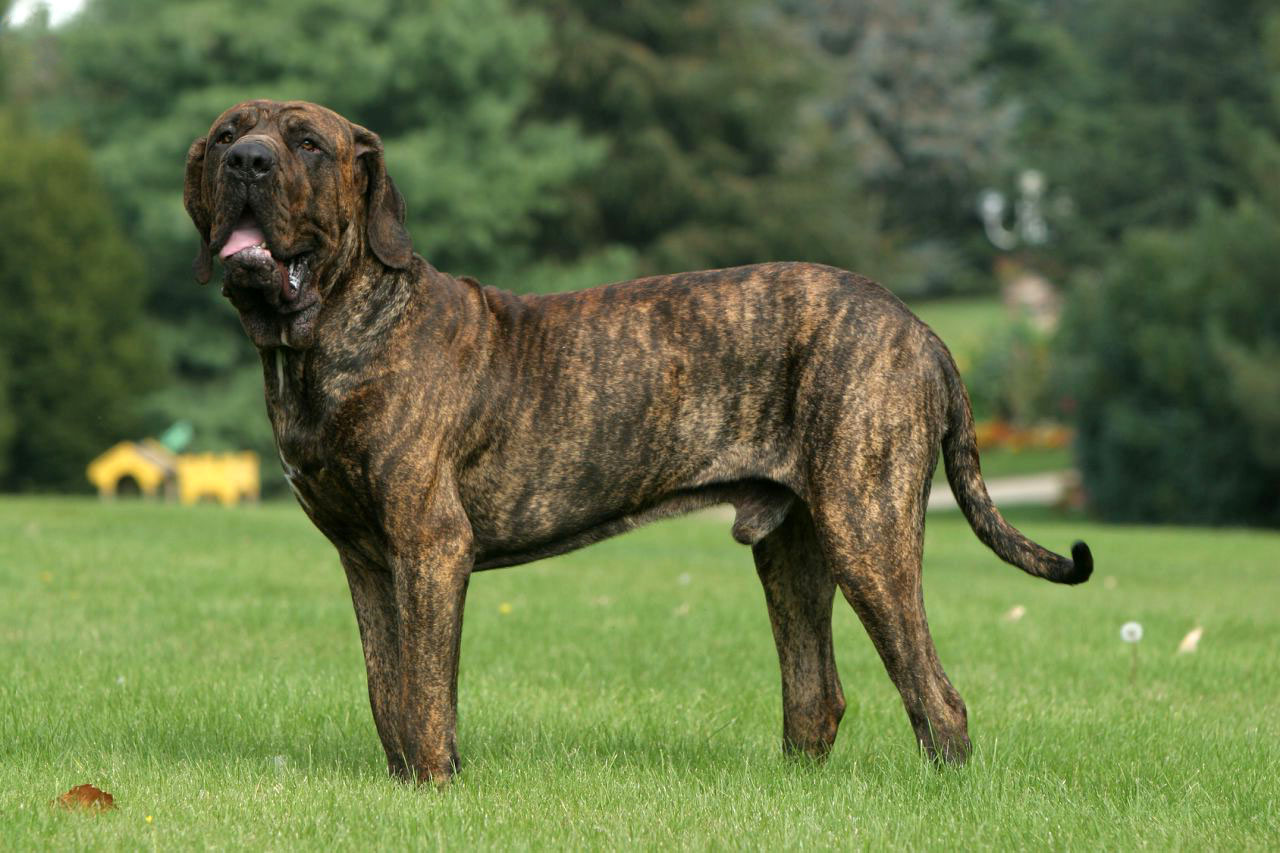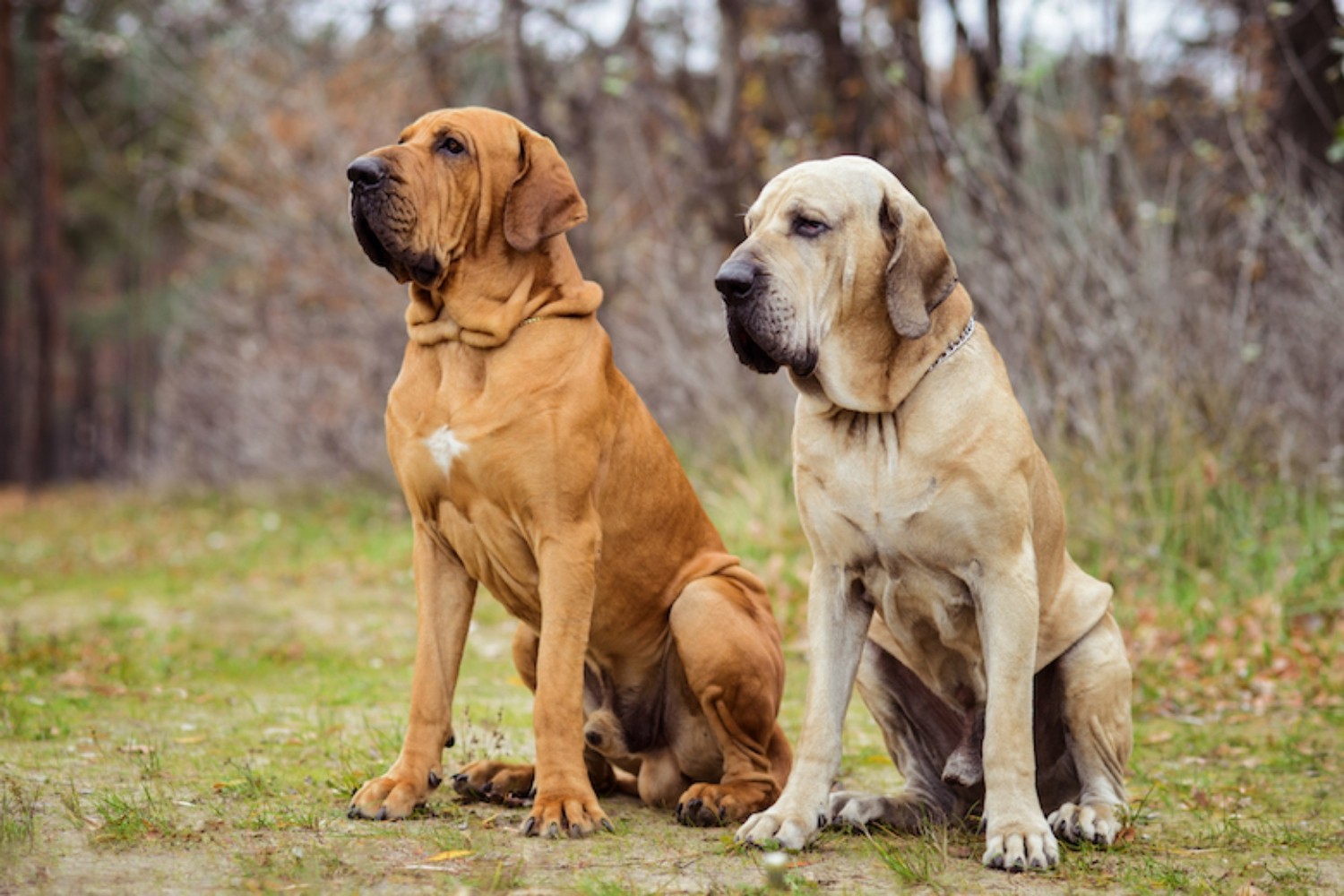
The Fila Brasileiro, also known as the Brazilian Mastiff, is a large, powerful guardian breed developed in Brazil during the 17th century. Bred to work on plantations and cattle ranches, the Fila was used for guarding property, tracking escaped slaves or fugitives, and managing livestock. Its ancestry likely includes Bloodhounds (for scenting), English Mastiffs (for power), and Bulldogs (for tenacity).
The Fila quickly became known for its unshakable loyalty and fierce protectiveness, summed up in the Brazilian saying: “Faithful as a Fila.” Though not widely accepted in international show circuits due to its guarding nature and potential aggression toward strangers, it remains highly respected in Brazil and among guardian dog enthusiasts worldwide.
The Fila is relatively rare outside of South America, largely due to breed bans, size, and temperament restrictions. In Brazil, it is a national icon known for its loyalty, but in other countries, it is kept mainly by experienced owners seeking a serious working or guard dog. Its intense drive and protective nature make it unsuitable for casual or first-time dog owners.
The Fila Brasileiro is a massive, heavy-boned Molosser breed with a loose, wrinkled coat and powerful gait.
• Coat: Short, dense, and smooth—easy to maintain and suited to warm climates.
• Color:
o All solid colors (fawn, black, brindle, red), sometimes with a black mask. White markings are undesirable.
• Size:
o Height: 24–30 inches (60–76 cm)
o Weight: 90–180 lbs (41–82 kg)
• Head & Expression: Large, rectangular head with pendulous flews and a noble, serious expression.
• Ears: Large, dropped, and V-shaped—frame the face and contribute to the breed’s solemn look.
• Tail: Long and thick, tapering to a point—carried low.
• Body: Muscular and rectangular, with a noticeably sloped topline—the hindquarters are higher than the shoulders.
• Gait: A unique camel-like ambling gait (pacing) gives the Fila an effortless stride.
The Fila is known for its unshakable devotion to its family and its intense suspicion of strangers.
• Protective and Courageous: Bred to guard fiercely and without hesitation.
• Loyal to the Core: Forms deep bonds with its family—especially one primary person.
• Distrustful of Strangers (Ojeriza): Displays “ojeriza,” a breed-specific term describing its natural aversion and wariness toward outsiders.
• Confident and Brave: Will act independently and make decisions in protection scenarios.
• Calm and Gentle with Family: Despite their power, they are tender with children and those they trust.

This breed is ideal for highly experienced handlers who need a serious guard dog that is also a gentle house protector.
• Unmatched Devotion: Known for its absolute loyalty—will not tolerate threats to its loved ones.
• Intimidating Presence: Deters intruders simply by standing watch.
• Low Grooming Needs: Low-maintenance coat and few grooming demands.
• Calm Indoors: When not working, it can be quiet, composed, and content in a calm home.
• Excellent Family Guardian: Protective instincts make it ideal for secluded homes or rural estates.
The Fila needs firm leadership, consistent structure, and a secure environment.
• Training:
o Requires expert handling—must be trained from a young age with consistency and authority.
o Socialization is key, though Filas will never become “friendly” to strangers.
• Exercise:
o Moderate needs—daily walks, yard time, and mental stimulation.
o Not suitable for dog parks or unsupervised off-leash play.
• Grooming:
o Weekly brushing and occasional baths.
o Clean ears, and check for drool-related skin irritation.
• Nutrition:
o Feed a high-quality large-breed formula, paying close attention to joint and weight health.
• Security:
o Must have a secure, fenced property.
o Visitors should be managed carefully—Filas may not accept unfamiliar guests.

The Fila is generally robust, but like other large breeds, may face:
• Hip and Elbow Dysplasia
• Bloat (gastric torsion)
• Entropion and Ectropion (eyelid issues)
• Skin Infections or Hot Spots
• Joint Stress in Old Age
With proper diet, exercise, and veterinary care, Filas live 9–12 years.
Compared to the Cane Corso, the Fila is less social and more innately suspicious. It’s more instinctive and less biddable than the German Shepherd, and more emotionally intense than the Great Pyrenees, whose guarding style is more relaxed. Among guardian breeds, the Fila is one of the most formidable in loyalty and suspicion.
This breed is suitable only for highly experienced dog owners who can manage a strong, protective, and emotionally intense guardian. It is not a breed for public socializing or casual dog ownership. For the right person, however, the Fila offers unparalleled devotion, courage, and protection.
If you live in a high-traffic area, want a dog to take to dog parks, or cannot commit to constant supervision and training, the Fila is not the right fit.
United Pet Club offers resources for responsible Fila ownership, including breeder referrals, care guides, training support, and breed-specific education. If you're prepared for the responsibility, the Fila Brasileiro will give you absolute loyalty and steadfast protection like no other.